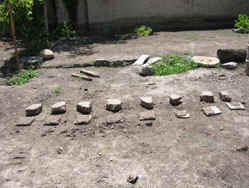
Plaster
When constructing an adobe house you have to plaster the outside in order to make it weather proof. With this knowledge we knew that a plaster would be necessary in order to hold the water inside our adobe box. But which one? Researching natural plasters we found that we could make some using clay, sand, straw and paper pulp (http://www.pequals.com/at/earthenplaster). The materials that we had available to us site were: dirt rich in clay, very coarse sand, straw (finely ground with our hands), and paper pulp which we created from our old homework and the help of a blender. We tested 8 types of plaster with different combinations of these materials to determine the recipe that would give us a smooth plaster with little or no cracking.
The table below lists the ingredients and results of the different plasters. A thin layer of each test plaster was applied on the smooth side of an adobe brick, rubbed down with a wet hand, and left horizontally on the ground in direct sun. Just for experimental purposes, a thick layer was also applied to a ceramic tile and also left in direct sun. As we were in the middle of making different plasters we realized that tests 1-4 were already cracking. Cracking plaster indicates too much clay where as a plaster that will not stick together indicates too much sand. We started experimenting with extra sand and adding paper pulp. The last 3 tests with extra sand were also applied on a standing adobe wall to test the difference between the plaster laying horizontally and vertically.
Our results varied due to a random rain storm which occurred only two hours after the tests were laid in the sun to dry. 24 hours after the tests began we were able to make conclusions about the different plasters. All tests on the tiles remained to damp to see results. Tests 1-5 produced major cracking. For tests 6-8, all the test results on the adobe wall showed small fragmented cracks while the tests on the ground produced more cracks. This could have been due to a thicker layer of plaster on the wall tests since thin layers of plaster tend to crack less. We found that equal parts of sand and clay produced the best plaster with the least amount of cracks (tests 7-8). The only difference between test 7 and 8 was the addition of paper pulp, which seemed to produce a smother finish. Since test 7 had the least cracks and smoothest finish this was our chosen plaster: 3 parts clay, 3 parts sand, 1 part straw, 1 part paper pulp.
|
Test
# |
Ingredients |
Observations/Notes |
Results |
|
1 |
4 parts clay |
Very
wet mixture, too much water. |
Lots
of cracking. |
|
|
3
parts sand |
|
|
|
|
1
part straw |
|
|
|
2 |
4
clay |
Less
water, too much clay. |
Lots
of cracking. |
|
|
2
sand |
|
Cracking
indicates too much clay. |
|
|
1
straw |
|
|
|
3 |
3
clay |
Feels
like more straw |
Cracking. |
|
|
2
sand |
content
per ratio. |
|
|
|
1
straw |
|
|
|
4 |
4
clay |
Lots
of straw, too much clay. |
Cracking. |
|
|
2
sand |
Not
a very smooth finish. |
We
need a higher sand ratio |
|
|
2
straw |
|
to
prevent cracking. |
|
5 |
5
clay |
Pulp
was way to wet, water |
|
|
|
3
sand |
needs
to be squeezed out. |
Cracking |
|
|
2
straw |
|
|
|
|
2
paper pulp |
|
|
|
6 |
4
clay |
Pulp
was compressed together |
Less
cracking. |
|
|
3
sand |
to
remove water. |
|
|
|
1
straw |
Looks
very smooth |
|
|
|
2
paper pulp |
in
the drying process. |
|
|
7 |
3
clay |
|
Very
smooth, little to no cracking. |
|
|
3
sand |
Feels
very sandy. |
|
|
|
1
straw |
|
|
|
|
2
paper pulp |
|
|
|
8 |
3
clay |
Very
coarse |
Little
cracking. |
|
|
3
sand |
|
|
|
|
1
straw |
|
|

All of plaster tests
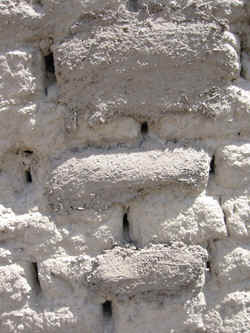
The three best tests (#6-8)
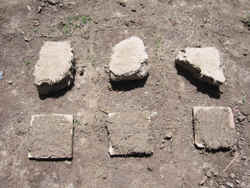
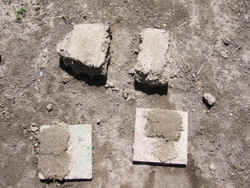
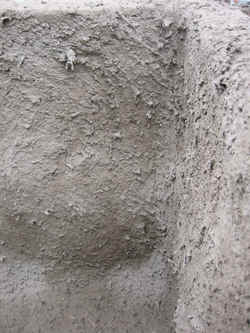
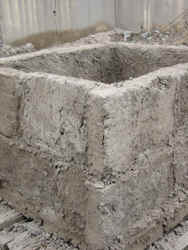
final paster inside